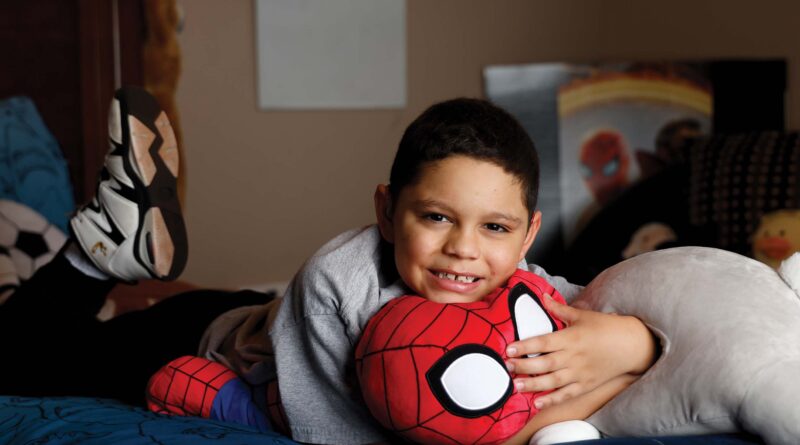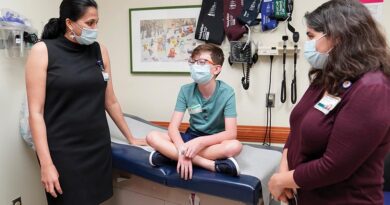Expandable prosthesis gives young patient more mobility
Published on July 6th, 2023 by Nancy Humphrey.
In January 2022, Dominic Gamez, an active 7-year-old boy who loved playing travel soccer, was diagnosed with an 8-inch tumor involving two-thirds of his femur, extending from the bottom of the femur near the growth plate (at his knee) to the femur shaft.
A biopsy at Monroe Carell Jr. Children’s Hospital at Vanderbilt revealed he had osteosarcoma, cancer that originates in the bone-forming cells. Treatment requires a combination of chemotherapy and surgery.
“Osteosarcoma is the most common bone cancer seen in children and is highly malignant,” said Scott Borinstein, MD, PhD, professor of Pediatrics in the Division of Pediatric Hematology and Oncology at Vanderbilt University Medical Center and director of the Pediatric Sarcoma Program at Monroe Carell. “Eighty percent of all osteosarcomas occur around the knee, like Dominic’s did,” he said.
Growth plates are the biologic machines that make new bone so that we can grow. In addition to removing the cancerous bone, necessary for a cure, often surgery to remove osteosarcoma involves the removal of growth plates.
His family was given three choices: amputate; replace the resected femur with a cadaver bone (allograft); or implant a magnetic expandable prosthesis that can be manipulated to grow incrementally as the child grows.
“Amputation was out of the question,” said Dominic’s mother, Lessley Gamez. They also ruled out an allograft which must be replaced as the child grows, is more unstable and is more apt to fracture with activity. The family chose the magnetic expandable prosthesis for Dominic, which has been used 17 times at Monroe Carell over the past decade. It requires one surgery to remove the tumor, check the tumor’s margins and insert the implant.
“Of all the options, this gives him the best chance to be active, to be Dominic,” said Dominic’s surgeon, Jennifer Halpern, MD, assistant professor of Orthopaedic Surgery. “The expandable femur
replacement/ knee replacement is durable, reliable, and it grows with the child.”
After a seven-hour surgery in April 2022 to remove his knee and femur, the prosthesis was implanted. A few weeks later he continued his chemotherapy regimen.
For patients who choose the magnetic expandable prosthesis, advanced imaging helps to plan and build their custom implants. MRI scans help to determine the size of the tumor that needs to be removed. CT scans are used to build custom implants that match the patient’s anatomy. The size of the implant also impacts the growth potential of the device. The larger the replacement, the more the implant can be “grown.”
Halpern said the magnetic expandable prosthesis is ideal for Dominic because his femur would normally grow more than 4.4 inches over the next eight years.
Within hours of surgery, Dominic took a few steps with his walker, and with the help of physical therapy, he was walking with a walker by the end of June 2022. Dominic, now 8, is doing well and hopes to join a swim team.



